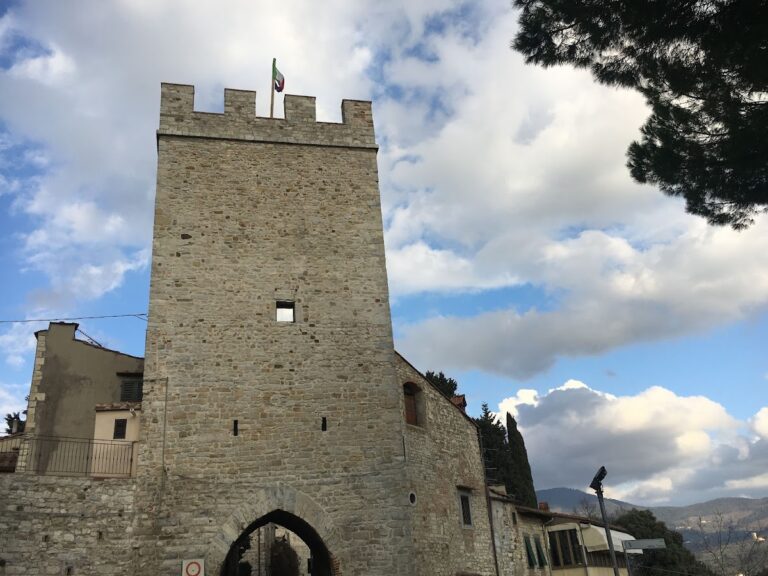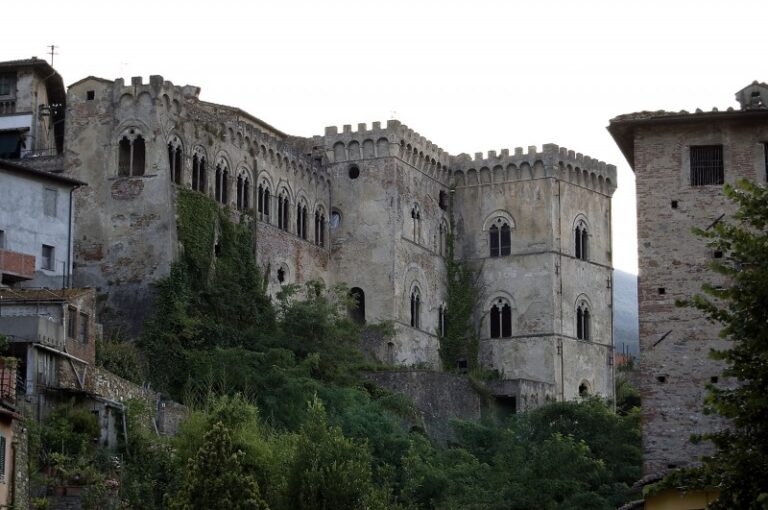Castel of Larciano: A Historic Fortress in Tuscany, Italy
Visitor Information
Google Rating: 4.6
Popularity: Low
Google Maps: View on Google Maps
Official Website: visitlarciano.com
Country: Italy
Civilization: Unclassified
Remains: Military
History
The Castel of Larciano is located in the municipality of Larciano, Italy. Its origins trace back to ancient times, with the site initially occupied by an Etruscan villa and later a Roman villa before transforming into a medieval fortress. The castle itself was established in the 10th century by the Guidi family, a noble lineage of Lombard descent who controlled large estates across Valdinievole and Tuscany.
In 927, Count Tegrimo Guidi, a forebear linked to the Modigliana branch of the Guidi family, constructed a tall tower approximately 40 meters high. This tower served to oversee and defend the surrounding Valdinievole area, marking the military significance of the emerging stronghold.
By the early 13th century, the castle came under new ownership when the four sons of Guido Guerra of Modigliana sold it to the municipality of Pistoia in 1225 for a sum of 6,000 Pisan lire. Following this transaction, the inhabitants became subjects of Pistoia, obligated to pay an annual tribute. Pistoia then undertook significant reinforcements, erecting a fortified curtain wall stretching around 1,050 meters, equipped with machicolations—overhanging projections allowing defenders to drop objects on attackers—and several towers, alongside two main gates named Bagno and San Marco. This fortification positioned the castle as a crucial southern defense point for Pistoia, overseeing the surrounding marshes, the Arno River basin, and the important medieval pilgrimage route known as the Via Francigena.
The early 14th century brought conflict as the castle endured siege from combined forces of Florence and Lucca, who allied against Pistoia. Nevertheless, Pistoia reclaimed control in 1310 by paying 10,000 gold florins. Later, in 1391, the castle functioned as a shared military base for Florence and Pistoia to counter threats posed by Gian Galeazzo Visconti’s expansionist ambitions.
After Pistoia submitted to Florentine authority in 1401, Larciano became the center of one of the four podestà jurisdictions under Florence’s fiscal administration, a stable political arrangement persisting through subsequent centuries. During the 15th century, Florence installed a stele crowned by the Marzocco, a heraldic lion symbolizing Florentine power, in the castle’s main square. Historically, the lion’s head became decapitated, a damage traditionally attributed to historical tensions with the nearby village of Cecina.
Between 1772 and 1774, Austrian authorities reshaped the political landscape, abolishing Larciano’s municipality and subordinating it to neighboring towns Serravalle Pistoiese and Lamporecchio. However, by the late 19th century, Larciano regained its administrative independence, establishing its municipal seat in the hamlet of San Rocco. Today, the castle houses a civic archaeological museum that displays discoveries from eastern Valdinievole spanning the prehistoric era to the late Renaissance.
Remains
The present layout of the Castel of Larciano dates primarily to the 13th century, reflecting the significant renovations conducted under Pistoia’s ownership. The castle’s enclosure has a perimeter of around 1,050 meters, and parts of the thick defensive walls remain standing and accessible today. These walls once featured machicolations—openings through which defenders could drop stones or boiling liquids on assailants—and were once supported by four strong towers positioned at three gates and the highest point of the fortress.
Among the towers, only the tallest one survives, situated within the castle’s central keep or donjon area. This tower was originally constructed in 927 by Count Tegrimo Guidi and still stands as a dominant feature, allowing views of the surrounding landscape from its approximately 200-step climb. The donjon area now serves as a museum space showcasing archaeological artifacts from the region’s prehistoric period to the Renaissance.
Within the castle’s courtyard lies the original water cistern, which has remained functional across centuries. Access to the castle was once controlled through three main gates—orientated toward a central square from which three streets radiated and then looped back. These gates, named Bagno and San Marco among them, along with portions of the defensive walls, are well preserved and provide a clear sense of the castle’s former fortification system.
Originally, the castle featured an elevated walkway connecting the corner guard posts, facilitating defense and surveillance. Although this elevated passage no longer exists, its prior presence indicates a sophisticated system for the movement of troops along the walls.
The donjon’s preserved perimeter integrates a dedicated museum area, housing finds that reveal the long history of human activity in the eastern Valdinievole region, underscoring the site’s continuous importance from early times through the Renaissance.










